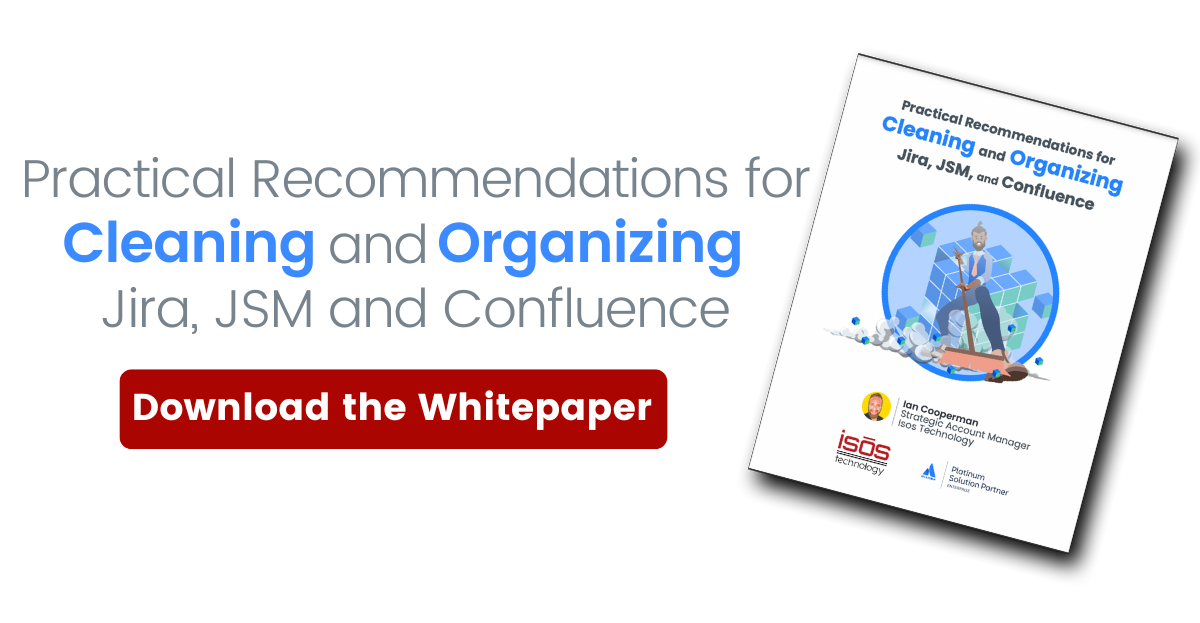 If your company uses Confluence, you know how powerful it can be when it’s working as it should. But over time, old spaces and data tend to accumulate, making it hard for users to find the most current and relevant content, thereby slowing the system down. If this sounds familiar, you might be due for a Confluence cleanup. Confluence cleanup activities generally fall into two categories: cleaning up your site and spaces, and reducing unnecessary data.
If your company uses Confluence, you know how powerful it can be when it’s working as it should. But over time, old spaces and data tend to accumulate, making it hard for users to find the most current and relevant content, thereby slowing the system down. If this sounds familiar, you might be due for a Confluence cleanup. Confluence cleanup activities generally fall into two categories: cleaning up your site and spaces, and reducing unnecessary data.
Clean Up Sites and Spaces
Maintaining a clean, clutter-free Confluence site makes it much easier to find relevant information. Following are three key tactics for clutter related to spaces, pages, and accounts.
- Delete or Archive Unused Spaces
If you have old spaces that are no longer in use, like personal spaces of people who have left the company for example, you can reduce clutter and minimize impact on system performance by deleting them. Or, if your organization’s policies and audit needs require it, you can also archive them or export them and back them up in long-term storage. - Clean Up Unneeded Pages
Content often has a shelf life, so after a while, you may find some that’s no longer relevant. Also, people often create duplicate content or start content, then never fully develop it. You have a couple of options for cleaning up obsolete pages like these: move them to an area of the page tree where they won’t be in the way or move them to a new space, then archive it. - Disable Accounts Owned by Inactive Users
Most companies disable accounts owned by inactive users as part of their standard de-provisioning practices, but it occasionally gets overlooked. Or, sometimes people change roles and no longer need Confluence access, even though they’re still with the company. Double-check to make sure inactive accounts have been disabled.
Reduce Unnecessary Data
Confluence sites can become data heavy, especially if you are storing iterative versions of multiple files in them. Cleaning up old data may require a bit of manual effort, but it can improve system performance and make backups and upgrades faster. One of the quickest, easiest ways to free up space in Confluence is to simply empty the trash on a regular basis. Beyond that, there are some other tactics you can try.
- Remove Unneeded Large Attachments
Some users may be storing old, iterative versions of large photo, video, or audio files that are no longer needed because newer versions exist. Go into Space Attachments and sort by size to see if this is the case. If you find spaces with unusually large attachments, reach out to the space owner to see what can be deleted. - Delete or Export Old Spaces
Deleting old spaces is not just a way to minimize clutter as we previously described—it can have a big impact on system performance if those spaces house a large amount of data. If deleting spaces is not an option due to organizational policies or audit concerns, then exporting them and storing them elsewhere will have a similar impact.
To learn more, download our whitepaper, Practical Recommendations for Cleaning and Organizing Jira, JSM, and Confluence.
Sign up to receive more great content
Learn more about Atlassian and how Isos can help by signing up to receive our latest blogs, eBooks, whitepapers and more.














